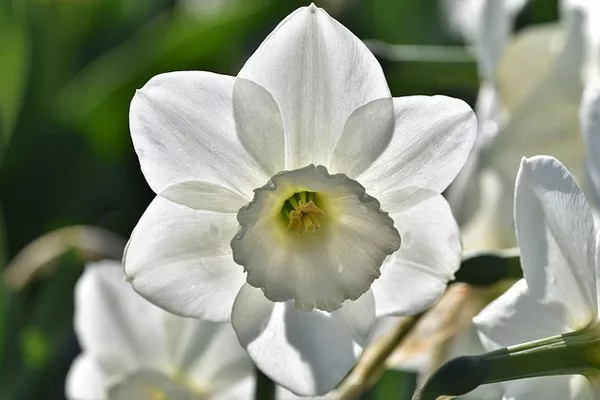March, the month that bridges the gap between winter and spring, brings with it a delightful bloom that symbolizes hope, rebirth, and new beginnings. The flower associated with March is the daffodil, also known by its botanical name Narcissus. In this comprehensive guide, we will delve into the charm and symbolism of daffodils, exploring their unique characteristics, cultural significance, and essential care tips to make the most of these radiant blooms.
Daffodils: A Captivating Introduction
Daffodils, with their vibrant yellow and white trumpet-shaped flowers, are synonymous with the arrival of spring. These elegant blooms belong to the genus Narcissus and are native to Europe and North Africa. Daffodils typically have a central trumpet-shaped corona surrounded by six petals, which give them their characteristic appearance.
The name “daffodil” is believed to be derived from the Greek mythological figure Narcissus, who was so entranced by his reflection in a pool of water that he could not tear himself away, ultimately transforming into a flower. This connection with the mythological tale adds to the allure and intrigue of these enchanting flowers.
Symbolism and Cultural Significance
Daffodils hold rich symbolism across various cultures. As a harbinger of spring, they represent renewal, hope, and the triumph of life over the harshness of winter. In many societies, daffodils are considered a symbol of new beginnings and the promise of better days to come.
In Wales, daffodils are particularly revered, and they are associated with St. David’s Day, celebrated on March 1st. On this day, it is customary to wear a daffodil or a leek, the national symbols of Wales, as a mark of pride and celebration of Welsh heritage.
In the language of flowers, daffodils also carry meanings of respect, chivalry, and unrequited love. Presenting someone with daffodils can express sentiments of admiration and affection.
Daffodil Varieties: A Kaleidoscope of Colors
Daffodils come in an astonishing array of varieties, offering a kaleidoscope of colors and forms. While the classic yellow daffodils are the most well-known, there are also daffodils with white, orange, pink, and even bi-colored petals. Some varieties have double or frilled petals, adding a touch of whimsy and elegance to the blooms.
Popular daffodil cultivars include the King Alfred, with its large, golden-yellow flowers; the Tête-à-Tête, a miniature variety perfect for container gardening; and the Ice Follies, which boasts white petals with a soft yellow trumpet.
Daffodils in the Garden: Planting and Care Tips
Daffodils are relatively easy to grow and are a welcome addition to any garden or landscape. To enjoy their charming blooms year after year, follow these planting and care tips:
1.Planting: Daffodil bulbs should be planted in the fall, ideally before the first frost, to allow their roots to establish before the arrival of spring. Choose a sunny or partially shaded location with well-draining soil.
2. Spacing: When planting daffodil bulbs, space them about 4 to 6 inches apart and plant them at a depth of 6 to 8 inches. Planting in clusters or drifts will create a more dramatic display.
3. Watering: Daffodils prefer a moderate amount of water during their growing season. Water them regularly but avoid overwatering, as they can be susceptible to rot in waterlogged soil.
4. Fertilizing: Before the daffodils start blooming, provide a balanced fertilizer to support their growth. After the flowers fade, allow the foliage to wither naturally, as the plant will store nutrients for next year’s blooms.
Daffodils in Floral Arrangements: Spreading Cheer Indoors
Daffodils are not only a beautiful addition to gardens but also a delightful choice for fresh floral arrangements. Their long, sturdy stems and cheerful colors make them a popular cut flower for brightening up indoor spaces during the spring season.
When arranging daffodils in a vase, avoid mixing them with other flowers initially, as daffodils exude a sap that can shorten the lifespan of other flowers. Instead, let them stand alone in water for a few hours before combining them with other blooms.
Conclusion:
In conclusion, the daffodil, the flower of March, represents the essence of spring and the promise of new beginnings. Their vibrant colors, elegant trumpet-shaped blooms, and rich symbolism make them a captivating addition to gardens and floral arrangements alike. As you plant and care for these radiant blooms, you’ll find yourself immersed in the spirit of hope and renewal that daffodils bring to the world each spring. So, embrace the charm of daffodils and let their beauty brighten your life and surroundings as March unfolds with the promise of warmer days ahead.


